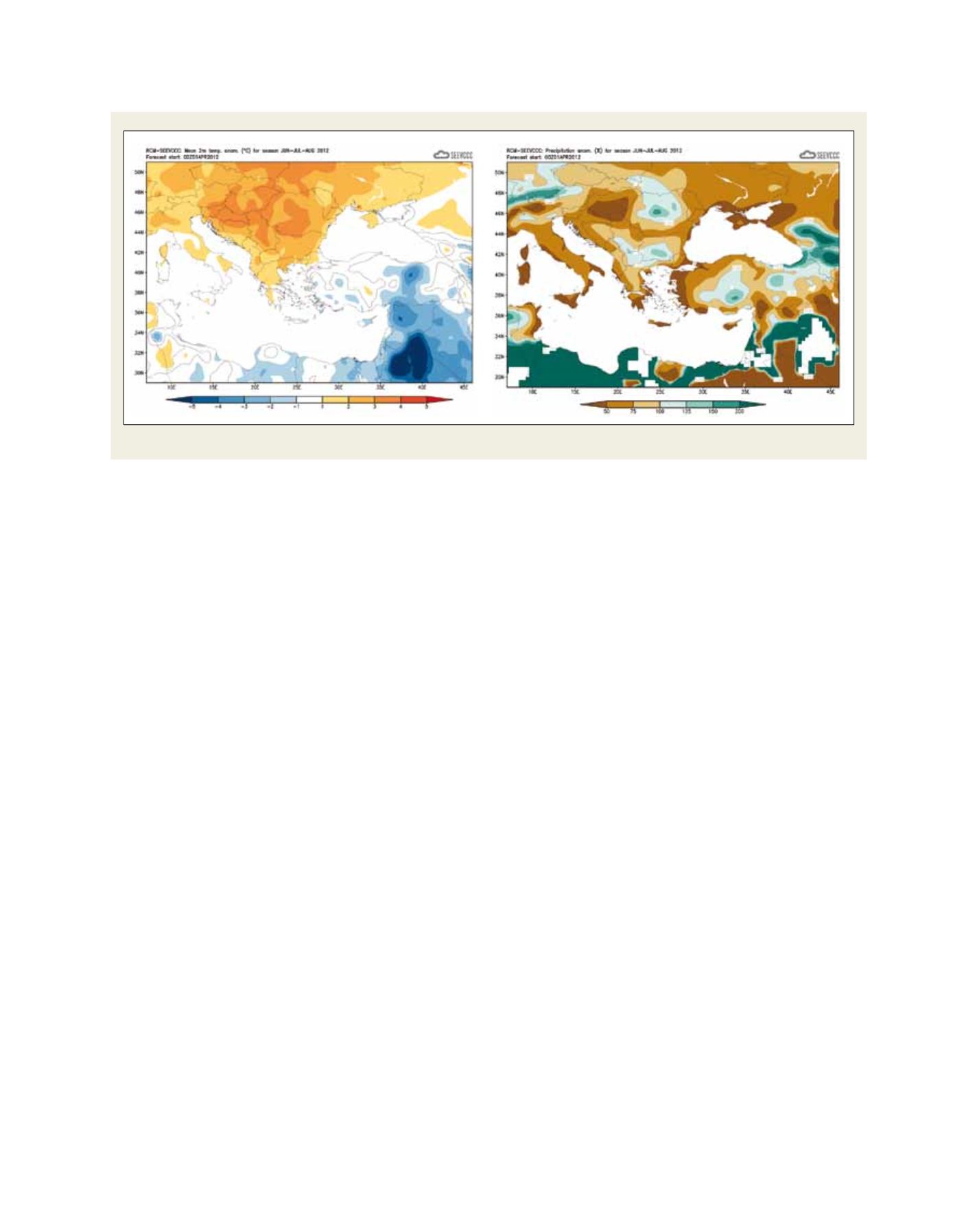

[
] 175
E
nergy
ensemble members and are issued on a monthly basis.
The results are available from the website in the form
of maps and diagrams for ensemble mean and anomaly
values.
2
Binary values are reachable on request to access
the centre’s data archives.
The main activities of SEEVCCC under the RA-VI
RCC Climate Monitoring Node relate to:
• Collecting actual climate data for around 400-500
meteorological stations within SEE – those included
in the international data exchange
• Climate data processing and operational issuing
of monthly and three-monthly climate monitoring
maps for SEE.
SEEVCCC provides regional climate projection data
covering SEE and the Mediterranean area. The centre’s
regional climate model (RCM-SEEVCCC) was also
applied in the climate change simulations based on
the A1B and A2 Special Report on Emissions Scenarios
used in the Intergovernmental Panel on Climate Change
(IPCC) fourth assessment report. These results are
further employed in different impact studies in the
agriculture, forestry, hydrology and energy sectors. The
model database includes 1961-1990 (present climate),
2001-2030 (A1B scenario), and 2071-2100 (A1B and
A2 scenarios) data.
In pursuing the highly-recommended functions
related to research and development, SEEVCCC
is particularly interested in the application and
further development of the National Centers for
Environmental Prediction unified nonhydrostatic
multi-scale model (NMMB) designed for a broad
range of spatial (global to sub-regional and local)
and temporal scales. This model, which is considered
to be well suited for the mission of the centre, has
been adopted and presently runs operationally as a
• Provide training and share the best experience and practice in
climate change, particularly in climate modelling and interpretation
of model outputs
• Build capacities of the SEE NMHSs in terms of human resources
and improvements to climate change products and services
• Connect the science and policy communities in adaptation
planning and climate risk management
• Facilitate partnerships between the NMHSs in the region and other
interested institutions dealing with climate change, as well as with
relevant international organizations, regional climate centres,
donor communities and so on.
Work to set up the SEEVCCC functions proceeded simultaneously
in two directions:
• Development of the South East European Climate Change
Framework Action Plan for Adaptation
1
• Participation in WMO activities under the framework of
the Regional Climate Centre (RCC) Network in Regional
Association (RA) VI (Europe).
Operations in the WMO RA-VI Pilot RCC Network
The WMO RA-VI RCC Network is envisaged to provide manda-
tory regional-scale tailored climate services on climate data, climate
monitoring, long-range forecasting and capacity building, as well as
to perform coordination functions and highly recommended research
and development activities. As a member of the network, SEEVCCC
has a mandate to provide all the above-mentioned tailored climate
services to the SEE sub-region, including the coordination of differ-
ent programmes and projects on the impact of climate change on
various sectors of the economy.
SEEVCCC issues seasonal forecasts for SEE which are based on
dynamical downscaling of the European Centre for Medium-Range
Weather Forecasts’ global seasonal forecasts with seven months’ lead
time. SEEVCCC uses its own seasonal prediction system based on a
regional interactively coupled atmosphere-ocean model. The centre
has been operational since June 2009. The forecasts consist of 51
An SEEVCCC seasonal forecast of the anomalies of mean temperature and precipitation during the June-August 2012 season, issued on 1 April 2012
Source: RHMSS
















